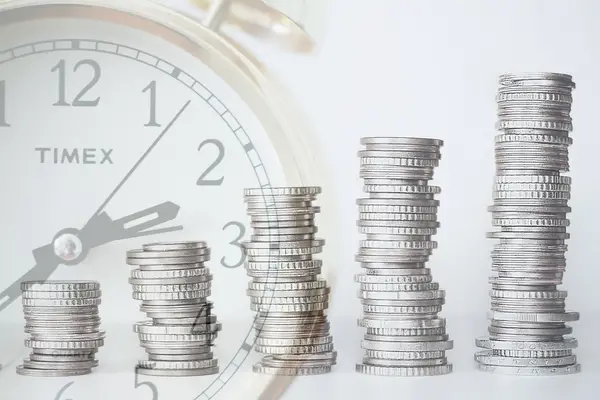
Most buy to let mortgages tend to be interest only. Which means you don’t pay anything towards the capital amount of the loan.
So what happens at the end of an interest only buy to let mortgage? At the end of an interest only buy to let mortgage you’ll need to find a way to repay the amount borrowed, as you’ll still owe the same amount as you borrowed at the outset of the mortgage. This is unless you’ve paid off some of the capital by paying amounts in addition to the interest only amount.
What is an interest only buy to let mortgage?
An interest only buy to let mortgage is a loan on which you simply pay the interest on the loan and no capital. Interest only mortgages are the preferred type of mortgage of property investors.
What are your options at the end of an interest only buy to let mortgage?
Whilst a buy to let mortgage is good for monthly cash flow on an investment property, there does come a time when the capital needs to be repaid at the end of the mortgage term.
But what are your options at the end of an interest only buy to let mortgage?
- Set up a monthly standing order to repay a part of the capital of the interest only buy to let mortgage during the term.
- Remortgage the property to another buy to let mortgage or a repayment mortgage.
- Ask to extend the mortgage term.
- Sell the buy to let property.
- Use an investment vehicle or regular savings to accumulate the capital to repay the loan at the end of the term.
Let’s take a look at each of these in more detail.
1. Set up a monthly standing order to repay a part of the capital of the interest only buy to let mortgage during the term
Whilst setting up a monthly standing order to repay a part of the capital of the buy to let mortgage defeats the object of having an interest only loan, it is an option.
It will mean you have more control over how much capital you repay each month. Versus if you have a repayment mortgage, the amount you repay each month is set by the lender and amounts to what’s needed to repay the mortgage in full by the end of the term.
That’s not to say you can’t set the standing order to a monthly amount to repay the full amount of the interest only mortgage by the end of the term.
Can you make overpayments on a interest only buy to let mortgage?
You can make overpayments on a interest only buy to let mortgage if the mortgage terms allow you to do so. Most of the buy to let mortgage providers will allow overpayments, but quite often they will limit the amount you can pay to a percentage of the outstanding loan per year.
The benefit of setting up a standing order to make overpayments has three advantages:
- The overpayments will reduce what you owe at the end as it goes towards what you owe rather than towards the interest.
- It will help you to fully repay your mortgage sooner.
- At the end of the term of the mortgage you’ll have less to re-finance or pay off in some other way.
- It reduces the amount of interest you pay over the term of the mortgage.
However, take a read of solution five below. If you can find an investment product that has a better investment return than the amount you pay as interest on the buy to let mortgage, you may be better to pay your money into the investment (See below).
2. Remortgage the property to another buy to let mortgage or a repayment mortgage
The preferred approach for most buy to let landlords is to simply keep remortgaging to another interest only buy to let mortgage. But in doing so this only pushes the can down the road.
But if it’s your intension to keep your buy to let investments for many years this makes sense as a strategy.
One of the drawbacks of this approach is if your buy to let property has a high loan to value mortgage secured on it. If at the time when the mortgage is at the end of its term, the property market is going through a downturn, your property may not value up enough for the full remortgage needed to repay the existing loan in full.
This is something that I experienced after the 2008 property crash with some of my properties in the north of England. A number of my properties were mortgaged with Northern Rock, which went bust in 2008.
When these mortgages came to the end of their term the administrators of these loans were not interested in extending the term. The properties concerned had dropped in value and were in negative equity. This was painful and meant I had to find £250,000 to cover the shortfall when I remortgage.
3. Ask to extend the mortgage term
Often mortgage lenders are happy to extend the term of a buy to let mortgage. This is beneficial if the interest rate on offer to extend is competitive. This is also a good option if the property is in negative equity.
You won’t need to remortgage and often times the lender don’t ask to reassess the lending. Nor do they ask to revalue the property. Just so long as you’ve kept up repayments throughout the lending term. This is a very easy lend for a mortgage company. This is because it involves very little paper work and they keep the business.
4. Sell the property
Many landlords choose to sell their buy to let properties at the end of the mortgage term. The downside of doing this means you could end up paying Capital Gains Tax (CGT). CGT is paid on any gain made between what you originally paid for the property and the amount you sell it for.
Also, if you sell the buy to let property to pay off the mortgage at the end of the term, you no longer have an income from the property.
If you have a portfolio of buy to let properties and during their ownership the values have increased sufficiently, you may be able to sell a part of your portfolio to pay down the mortgages on the properties you decide to keep. This will remove any borrowing and increase your monthly cash flow on your remaining properties.
Over the last few years landlords have been selling their buy to let properties and portfolios. This is partly because of the Section 24 Tenant Tax change. This change meant that mortgage interest is no longer a deductible expense for landlords.
“After a gruelling 3 year divorce I was left with 15 properties, 17 year old twins to support through University and the prospect of Section 24 on the horizon.
Testimonial on Prioperty118.com; read JB’s full review here from a property landlord taking advance of Section 24 tax advice.
I had read about Mark Alexander’s spectacular success in fighting West Brom and winning £27 million in repayments to landlords who had been overcharged. It was a truly magnificent result and benefited every landlord in the country who has a tracker mortgage.
I knew I needed help to restructure so decided to invest in a consultation with Mark. This was an excellent decision. Mark grasped my situation quickly, knew what questions to ask and is knowledgeable on the landlords ultimate trinity of property, finance and law.
My twins are now 18 and I have formed a partnership with them. I can choose how much profit to allocate to them to utilise their zero/basic rate tax band and keep myself in the basic rate tax band. In 3 years time I will be able to incorporate the partnership WITHOUT needing to refinance, WITHOUT paying SDLT and WITHOUT paying CGT. Magic!“
5. Use an investment vehicle or regular savings to accumulate the capital to repay the loan at the end of the term
If you can find a good investment vehicle that pays a good rate of return, you may want to put some money aside as an accumulator.
In option one above I suggested that you could set up a standing order to pay down the capital of the interest only mortgage. However, if you can find an investment vehicle with a higher rate of return than you pay in interest, you might be better to invest the money instead.
Example: If you have a buy to let mortgage with an interest rate of 3% per annum. Then you find an investment vehicle offering an 8% return. Keeping the maths simply for this example; if you repaid capital on your interest only buy to let mortgage by £20,000. This saves £600 each year at 3% interest rate. But if you had invested £20,000 over 12 months at an 8% return you would earn £1,600 instead. For simplicity I’ve assumed the full £20,000 was paid in one lump at the start of the period.
If you compound the 8% investment vs repayment of your mortgage at a 3% interest rate, the difference could be significant for what happens by the end of an interest only buy to let mortgage term.
You also need to consider the tax implications of investing vs paying off your interest only buy to let mortgage.
Be careful when you consider this. Investment returns are not a guarantee. Also, investment returns can fluctuate over time and not all investments are totally risk free. Interest rates also fluctuate on interest only mortgages.
If the interest rate were to increase above the investment return, you may wish to switch your approach.
Why is an interest only loan better for an investment property?
An interest only loan is better for an investment property because the payments are lower than a repayment mortgage. This allows the investor to keep more of the monthly income.
Also, an interest only mortgage is better for lowering tax. But only if you’re careful about how you structure your investment portfolio ownership.
The extra monthly cash flow gained by using an interest only mortgage can be used to invest elsewhere too.
How do you calculate the payments on an interest only buy to let mortgage?
The way to calculate the payments on an interest only mortgage is straight forward. This is done by multiplying the loan amount by the interest percentage number and dividing this amount by 100 and then by 12.
For example: If an interest only mortgage is £100,000 and the interest rate is 4%. The monthly payment would be £333.33 (i.e. £100,000 x 4/100/12).
If you would prefer to use a interest only buy to let mortgage calculator. Please visit Martin Lewis’s Money Saving Expert and use their mortgage payment calculator.
What are buy to let interest-only pros and cons?
Pros to buy to let interest-only:
- Lower monthly payments.
- Higher monthly cash flows providing a better income.
- Tax efficient if the property ownership is carefully though about.
- Lower outgoings during rent voids.
Cons to buy to let interest-only:
- The capital of the mortgage is not paid down over the term so at the end of an interest only buy to let mortgage you still owe 100% of the amount borrowed.
- If you need to remortgage when property prices are depressed this could be a problem if the loan to value is high.
- If you have to sell the property for less than what’s owed this could leave you with a financial nightmare.
- More interest is paid over the term of the mortgage vs a repayment mortgage.
I hope you’ve got something from reading this article about what happens at the end of an interest only buy to let mortgage
If you’ve got something from this article on “what happens at the end of an interest only buy to let mortgage” please share it on your favourite social media site.
Also, if you have any questions, please feel free to comment below too. Alternatively, if you need more help, please feel free to contact us on our contact us page here. Or join the discussion and ask your question in the property forum.




